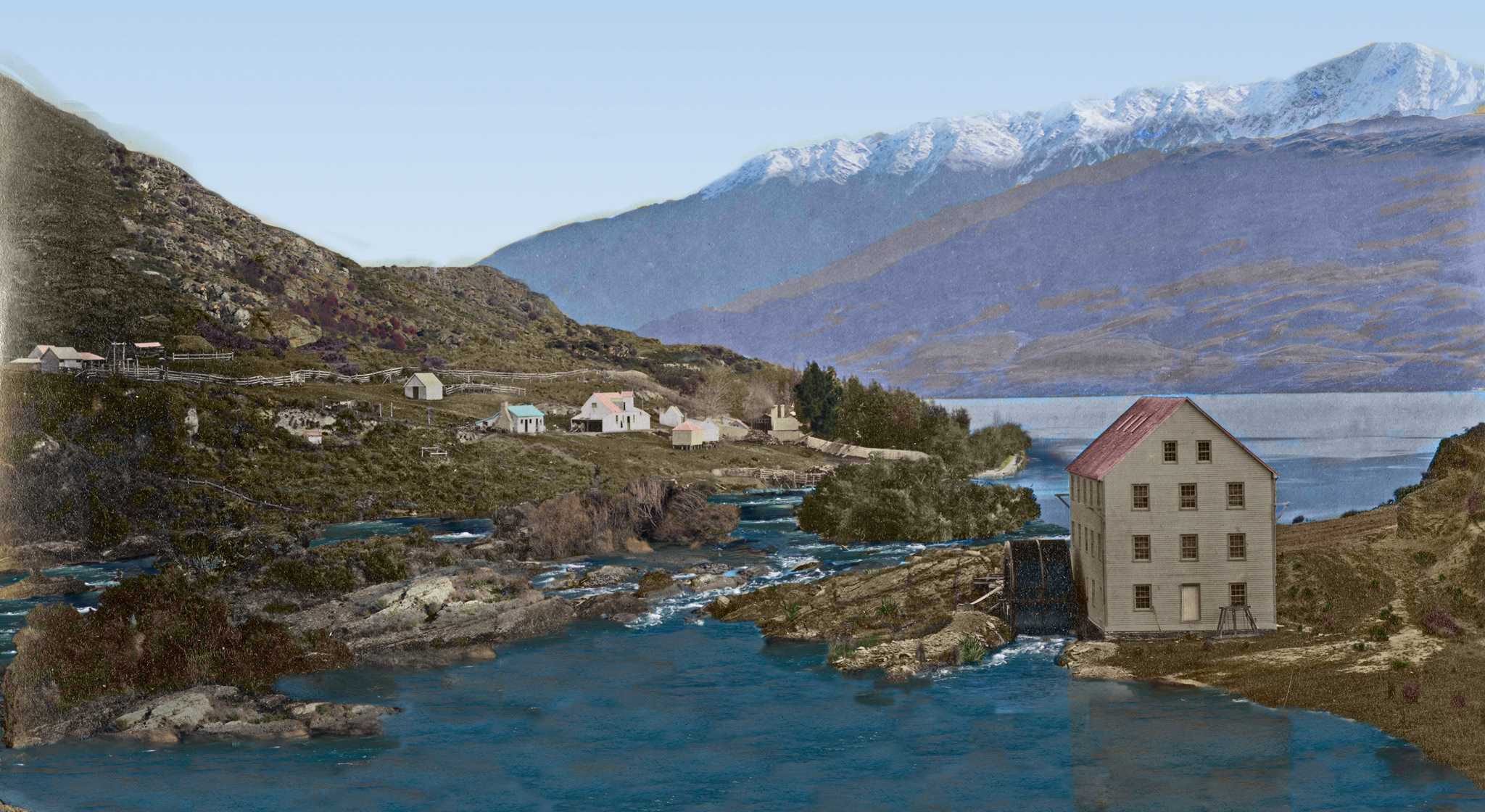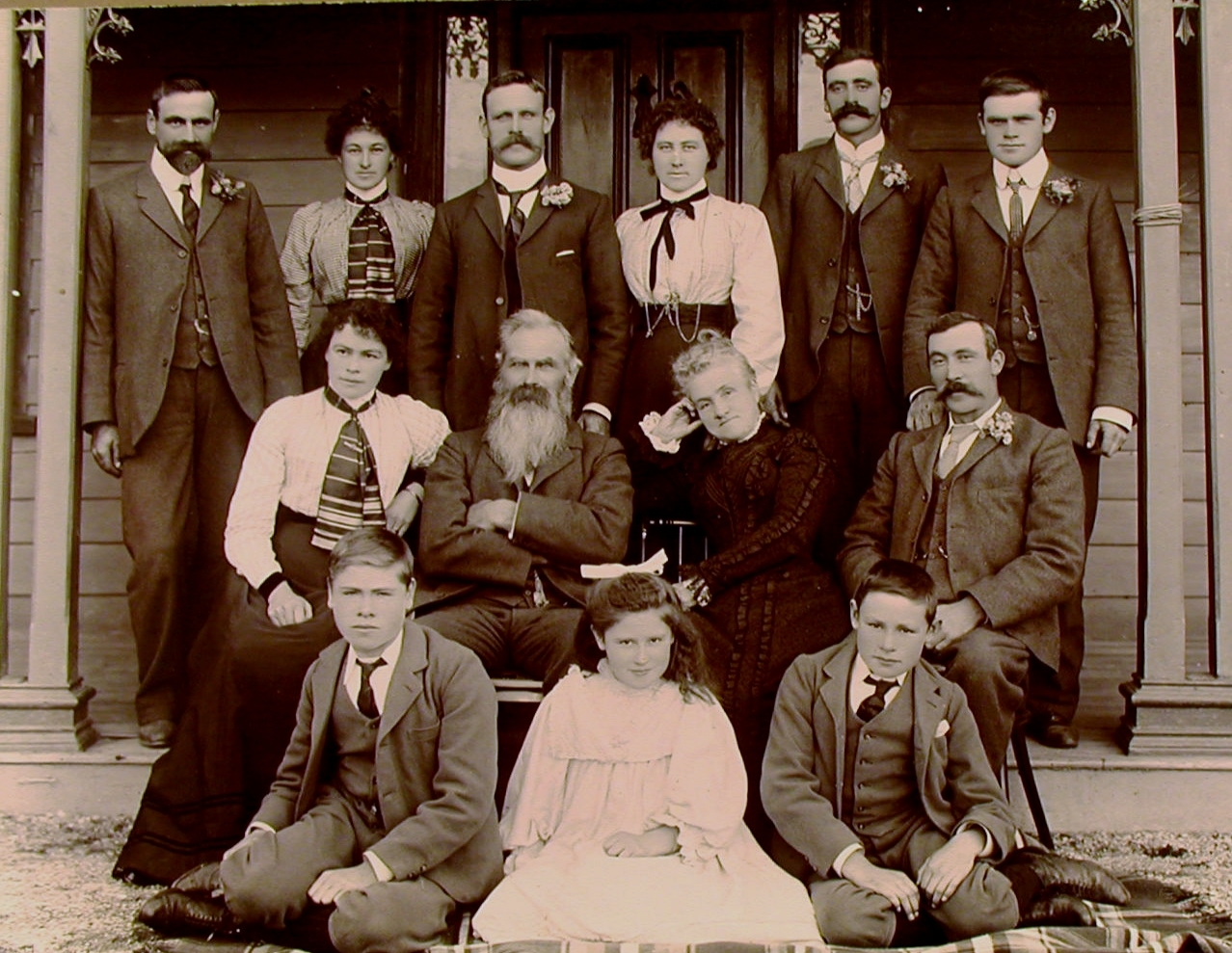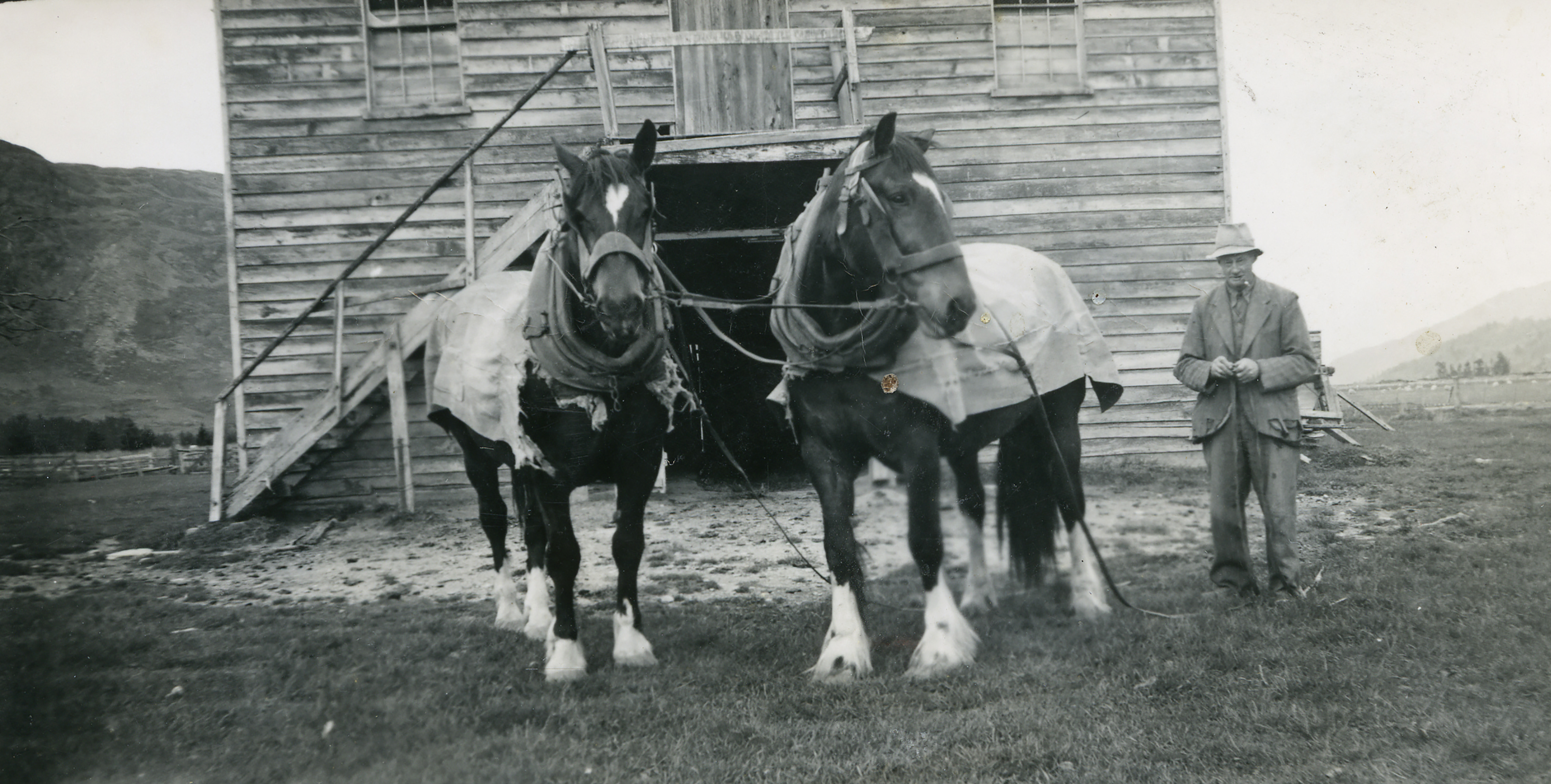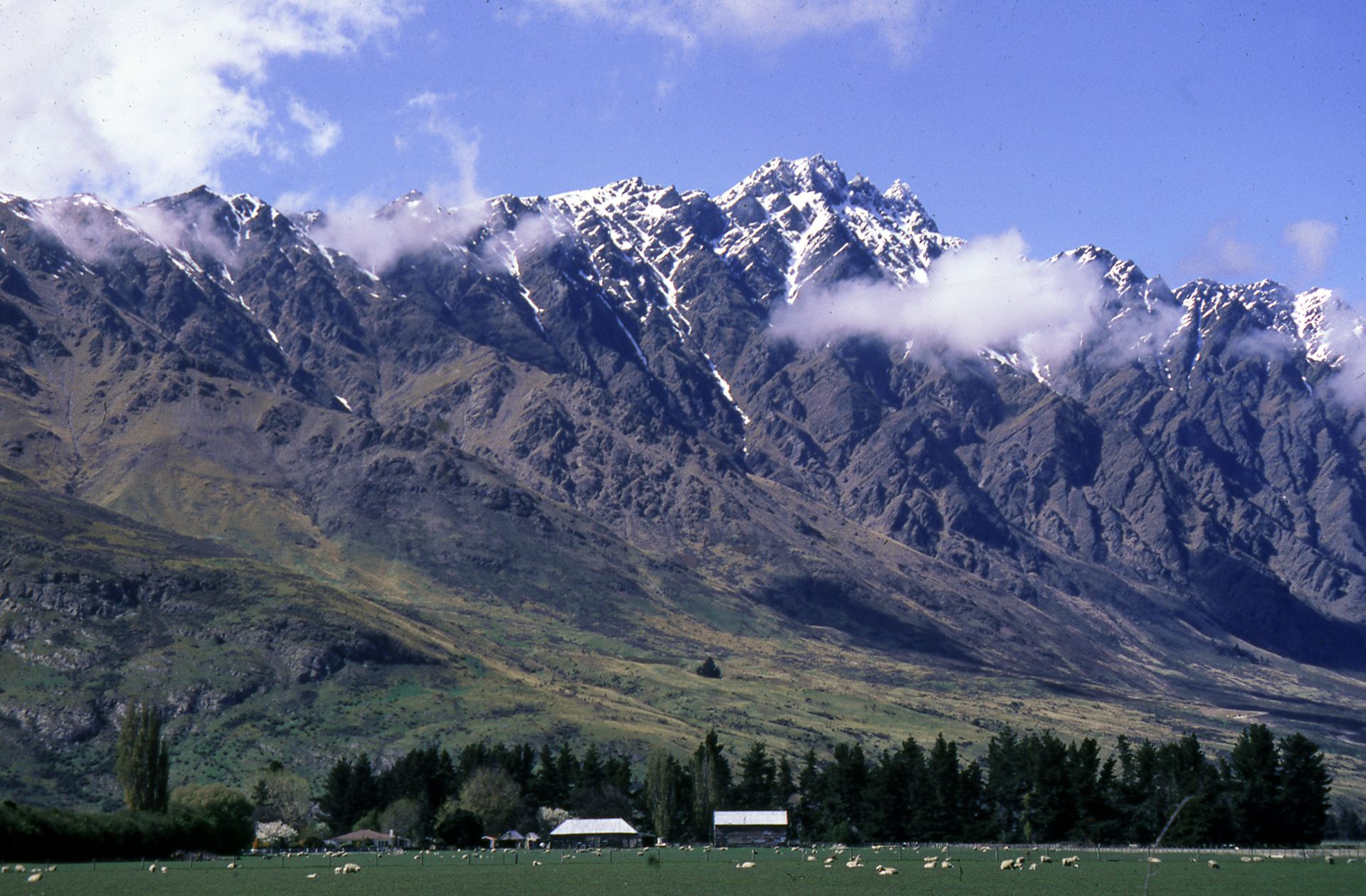Arranmore Farm
One of the district's most treasured heritage sites is located on Queenstown Airport land.
Arranmore Farm – also known as French Farm, Antrim Farm and McBride's Farm in past times – dates back to the earliest days of European settlement in this region and has connections to some of Queenstown's most prominent pioneers.
The town sprang up on the shores of Lake Whakatipu when gold was discovered in the Shotover River in 1862 and brought a rush of fortune-hunters to the area.
Among them were a group of businessmen who had worked together in the timber industry in Victoria, Australia, and quickly saw the rich opportunity in supplying goods to fellow new arrivals.
The entrepreneurs included James William ('Daddy') Robertson, Thomas Hicks, James Cochrane Patterson, James Whitbourne, brothers Francis and Daniel McBride and their cousin John McBride, who established a sawmill at the head of Lake Whakatipu and built a paddle steamer, the Antrim, to carry their timber to Queenstown to sell. The venture proved lucrative and was soon expanded into ironmongery and groceries.
After the fertile Frankton Flats were surveyed for agriculture in 1866, the men, trading as Robertson and Co, also took up farming, planting grain crops on this land.
Meanwhile, Robertson formed a partnership with Bendix Hallenstein to build the Brunswick Flour Mill by the Kawarau Falls. When the immense building was opened on 31 July 1867, Resident Magistrate Lowther Broad raised a toast, saying the occasion was a sure sign that a most important industry – agriculture – had become permanent in the district. Hallenstein said that when the idea of a mill was conceived, there were very few farms in the district. However, the area of cultivated land had increased enormously and had quickly become the home of hundreds of families.

The Brunswick Flour Mill at Kawarau Falls was four storeys high and powered by a wheel nearly five metres in diameter.
Image: Wikimedia Commons
Robertson and Hallenstein were widely lauded for their enterprise and served as the first and second mayors of Queenstown. However, their mill soon faced competition from other mills and was never very profitable. It eventually ceased production in 1904.
Robertson died in 1876 and when Robertson & Co was dissolved in 1883, Francis (Frank) McBride bought the Frankton farmland.
The property was described in an advertisement published in the Lake Wakatip Mail on 26 January 1883 as 625 acres, subdivided into 12 paddocks, along with a nine-roomed dwelling, men's huts, a barn, a 12-stalled stable, and a cowshed.
"This valuable farm is situated on the margin of Lake Wakatipu, and adjoining Brunswick Flour-mill, and is composed entirely of low lands, every acre of which is ploughable by double-furrow ploughs; a great portion is at present laid down in English grasses. The whole of the land is in thorough good heart, never having been overworked, and notwithstanding the very bad season there are at present some magnificent crops of grain growing, and from its proximity to the Lake grain is worth 2d to 3d per bushel more than in any other part of the district."
When prices for wheat and oats fell, Frank McBride turned to barley with such success that he earned the moniker "the Barley King".
However, by the late 19th century, the profitability of grain crops was declining and McBride diversified into sheep farming. A wooden grain store built in the early days of the farm was converted into a woolshed, which was added to over following years.

Frank and Margaret McBride surrounded by their family in a photograph taken in front of their home about 1900.
Image: Courtesy of Lakes District Museum EP0132
With the help of his large family, Frank McBride continued farming until he was in his 80s, when he retired to Dunedin.
At a large farewell social and dance in November 1919, Mayor Andrew Simson presented McBride with an easy chair and a gold-mounted walking stick. A report of the occasion published by the Lake County Press described McBride as "a member of that splendid band of men whose pluck, whose hardihood, and whose enterprise laid the foundation of the settlement in these parts, and to whom we owe our proud early history with its fascinating romance of the gold-digging days".
"He was one of the giants of those days, an outstanding character."
The next owner of Arranmore was John E. O'Connell, who paid £12,000 for the property and farmed it until 1926, when it was sold at auction to brothers John and James Watts.
During the Watts' ownership, pilots began using the farm as a regular landing site, then in 1938 an aerodrome was developed on neighbouring land previously used as the Frankton racecourse. Soon after, World War II broke out and in 1940 the aerodrome was closed for the duration of the war.

Charlie Hansen with a pair of draught horses in front of the stables/barn.
Image: Courtesy of the Lakes District Museum EP3126
In 1941, Arranmore Farm was bought by Charles (Charlie) Hansen, whose family were early settlers in the district and had long owned land nearby at Lake Johnson. He and his wife, Mabel, had two sons, Alan and Evan, who worked alongside their father, growing grain and seed crops, as well as running an 800-strong flock of Romney sheep. When the two young men were called up for military service, their sister, June, left school to work with her father on the farm.
Interviewed in 2018, she recalled the important role the family's five draught horses played on the farm, particularly during cultivation and harvesting.
"After the war, we were able to get a tractor ... We thought this was marvellous. We didn't have to feed it, we didn't have to put it to bed at night and go out and cover it over. The old horses got sold, which I was sorry about."
Also after the war, Arranmore was connected to electricity.
"The power was going to come through to the hospital from Roaring Meg and the Power Board asked my father if they could put the poles through our farm. He said, 'You can if you give me the power', so we got power in the house."

An aerial photo of Arranmore Farm and Queenstown Airport taken in 1950
Image: V C Browne & Son
When Evan married in 1950, he went into partnership with his father and in 1960 he took over full ownership of the farm. About this time, the homestead was replaced with a more modern house. None of the original building remains.
Evan's wife, Mary, was interviewed about her memories of life on Arranmore by Elizabeth Macdonald for the Queenstown and District Historical Society in 2005.
"The old house had a verandah decorated with 'Sydney lace' and was a lovely spot to sit," she said.
However, in the early days, houses were often built on stone foundations and the floors were close to the ground, so eventually rotted.
"When they started taking down parts of the old house, they found that the outer walls were filled with coarse sand and gravel; good insulation, I expect, but might dusty to remove."
An old orchard and substantial mature trees grow among the buildings on Arranmore.
"The farm was very self-sufficient, with a good vegetable garden and an orchard with apples, apricots, peaches, pears, plums and greengages – the lot. We had small fruits as well – black and red currants, gooseberries, and enough raspberries to sell to regular customers," Mary Hansen said.
"Also, we had hens ... I used to sell a crate of eggs each week to the grocer and this paid for the groceries."
During the mid-1960s, the airport landholding expanded to encompass part of Arranmore. Another area of the farm was zoned for industrial use, a slice was taken for the new Shotover Bridge, and sewage ponds were constructed on the Hansens' riverside land.
"By 1974, we felt that if we lost any more land to development the farm would be uneconomic, so we sold to a consortium," Mary said.
"I enjoyed our farming days, although it was very busy and hard work. I expect we were typical of many of the small farms around the district."

The Remarkables soar above Arranmore Farm. The smithy is hidden among trees to the left of the farmhouse. The other buildings include, from left, a garage, the dairy, a hut, the woolshed and the barn.
Image: Courtesy of the Lakes District Museum EL7324
Reg and Judy McTaggart were the last to farm the land, living at Arranmore until 2005, when it was broken up for property development. However, the old woolshed, a stone smithy, a stone dairy, a hut, and a two-storey timber barn (owned by the Queenstown Lakes District Council) remain as a snapshot of the past.
Together, they tell the story of a fledgling community's efforts at self-sufficiency and the importance of agriculture in the Whakatipu Basin. They also tell the story of changing land use over time and the growth of Queenstown Airport as tourism became a new source of prosperity for the Southern Lakes region.

